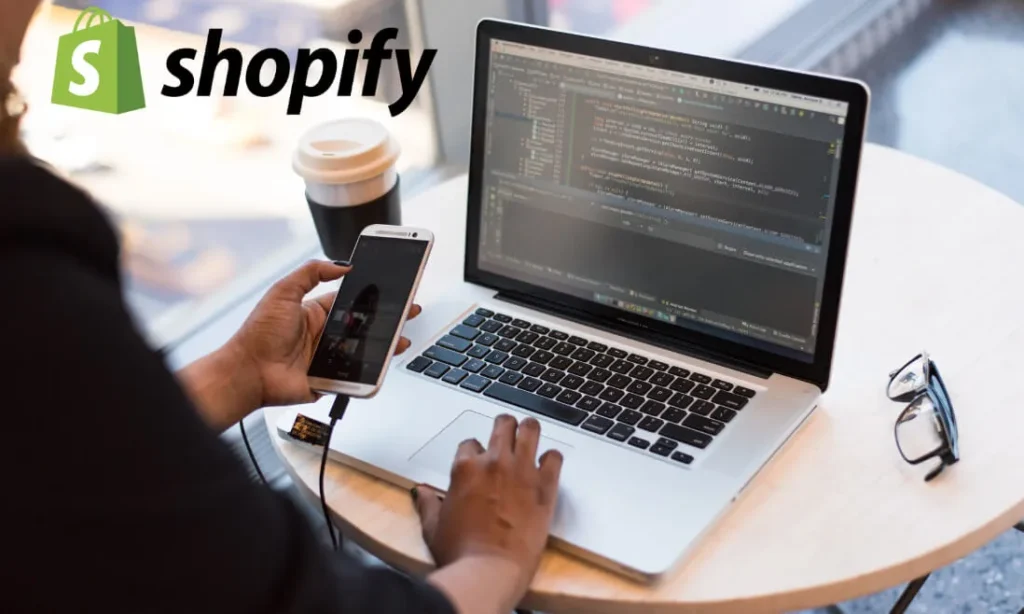Introduction 🌍
The rise of e-commerce has made Shopify one of the most in-demand platforms globally. With millions of merchants and businesses migrating to Shopify, the demand for freelance Shopify developers continues to grow in 2025. Unlike traditional full-time roles, freelancing offers flexibility, independence, and the ability to work with global clients.
But success as a freelancer requires more than coding skills — it involves building technical expertise, strong communication, personal branding, and business acumen. This roadmap will guide you step by step to thrive as a freelance Shopify developer in today’s competitive marketplace.

1️⃣ Understanding the Shopify Ecosystem
Before diving into freelancing, it’s critical to understand Shopify’s ecosystem:
- Shopify Stores: Merchants selling products online through customizable stores.
- Themes: Templates that define store design, layout, and branding.
- Apps: Extensions to add advanced features such as subscription billing, shipping automation, and upsells.
- Shopify Plus: Enterprise-level platform for large-scale businesses.
👉 As freelance Shopify developers, mastering both front-end (themes, Liquid, JavaScript, CSS) and back-end (APIs, app development, headless commerce) ensures you can provide a full range of services.
2️⃣ Building the Right Skill Set 🎓
To succeed, freelance Shopify developers must master both technical and soft skills:
Technical Skills:
- Liquid Templating: Shopify’s proprietary language.
- HTML, CSS, JavaScript: Essential for custom designs and interactivity.
- REST & GraphQL APIs: For app integration and external system connections.
- Node.js / React: Popular for Shopify app development.
- Shopify CLI & GitHub: For version control and efficient workflows.
- Headless Commerce: Using Shopify as a backend with custom front-end frameworks.
Soft Skills:
- Client communication.
- Project estimation and pricing.
- Problem-solving and debugging.
- Time management.
By combining these, freelance Shopify developers gain a competitive edge in a crowded marketplace.
3️⃣ Creating a Strong Portfolio 💼
Your portfolio is your biggest sales tool. As a freelancer, clients evaluate your past work before hiring. To stand out:
- Build 3–5 demo Shopify stores showcasing different industries (fashion, electronics, beauty).
- Highlight before & after transformations with case studies.
- Showcase custom apps or plugins you’ve built.
- Use visual storytelling (screenshots, videos, testimonials).
- Host your portfolio on a personal website with a blog to improve SEO.
👉 A polished portfolio signals professionalism and helps freelance Shopify developers secure higher-paying projects.
4️⃣ Finding Clients and Projects 🌐
One of the biggest challenges for freelance Shopify developers is finding consistent projects. In 2025, the best methods include:
- Freelance Platforms: Upwork, Fiverr, Toptal, Contra.
- Specialized Marketplaces: Storetasker, Shopify Experts Marketplace.
- Networking on LinkedIn: Share content, success stories, and Shopify tips.
- Cold Outreach: Contact store owners directly with improvement suggestions.
- Partnerships: Collaborate with digital marketing agencies offering Shopify services.
- Communities: Join Slack, Discord, and Reddit groups for Shopify professionals.
Pro Tip: Instead of competing for low-budget gigs, freelance Shopify developers should target long-term retainer clients needing ongoing store management and optimization.

5️⃣ Pricing and Contracts 💰
Many beginners underprice themselves. In 2025, the average hourly rate for freelance Shopify developers ranges between $40–$150, depending on skill level and region.
Pricing Models:
- Hourly Rate – Best for ongoing support.
- Fixed Price – Suitable for well-defined projects.
- Retainer – Monthly fee for ongoing work (e.g., maintenance, SEO).
Contract Essentials:
- Project scope.
- Deliverables and timelines.
- Payment terms (milestones, upfront deposits).
- Revisions policy.
- Ownership and intellectual property rights.
👉 Transparent contracts protect both clients and freelance Shopify developers from disputes.
6️⃣ Essential Tools for Freelance Shopify Developers 🛠️
To work efficiently, you need the right toolset:
- Shopify CLI – Faster development workflows.
- VS Code – Popular IDE with Shopify extensions.
- GitHub/GitLab – Version control and collaboration.
- Postman – API testing and debugging.
- Figma/Canva – For design collaboration.
- Trello/Jira/Notion – Project management.
- Slack/Zoom – Client communication.
Using these tools streamlines workflows, making freelance Shopify developers more productive and professional.
7️⃣ Personal Branding & Marketing 🚀
In freelancing, your personal brand is your business. To establish authority:
- Publish Shopify tutorials and blogs on Medium or LinkedIn.
- Post short video case studies on TikTok, Instagram Reels, and YouTube.
- Collect and display client testimonials.
- Build authority by answering Shopify questions on Quora or Reddit.
- Grow an email list by offering a free guide: “10 Quick Wins for Shopify Store Owners.”
👉 By consistently showing expertise, freelance Shopify developers attract inbound clients instead of chasing leads.
8️⃣ Scaling Beyond Solo Freelancing 📈
Once established, the next step is scaling. Successful freelance Shopify developers evolve into agencies or product creators:
- Agency Model: Hire subcontractors for design, SEO, or ads.
- App Development: Build and sell apps on the Shopify App Store.
- Courses & Coaching: Teach aspiring developers.
- Recurring Services: Offer subscriptions like maintenance and performance optimization.
Scaling creates passive income streams and reduces dependency on project-based work.
9️⃣ Trends in Shopify Development (2025 Edition) 🔮
To remain competitive, freelance Shopify developers must adapt to trends:
- Headless Commerce: Using frameworks like Next.js with Shopify’s APIs.
- AI-Powered Personalization: Integrating AI-driven product recommendations.
- AR & 3D Product Previews: Enhancing customer experiences.
- Sustainability Features: Carbon-neutral checkout and eco-friendly integrations.
- Globalization: Multi-language, multi-currency, and region-specific stores.
👉 Staying updated ensures freelance Shopify developers remain valuable in an evolving ecosystem.

Conclusion ✅
Becoming successful as a freelance Shopify developer in 2025 requires more than coding. It’s about combining technical mastery, strong branding, business sense, and adaptability. By following this roadmap — from mastering Liquid and APIs to scaling into an agency — developers can build sustainable, profitable, and location-independent careers.
The world of e-commerce is expanding rapidly, and Shopify remains at the forefront. Whether you’re just starting or scaling to an agency, this roadmap gives you the complete guide to thrive as a freelance Shopify developer in today’s digital economy.
External Resources 🌐
- Shopify Developers Documentation
- Shopify Experts Marketplace
- Upwork for Freelance Shopify Developers
- Storetasker Freelance Network
- Liquid Templating Guide
- GraphQL Admin API
Also Read: Freelance Business Analysts: Unlocking Powerful Insights for Smarter Business Growth in 2025


2 thoughts on “The Best Roadmap for Freelance Shopify Developers in 2025”